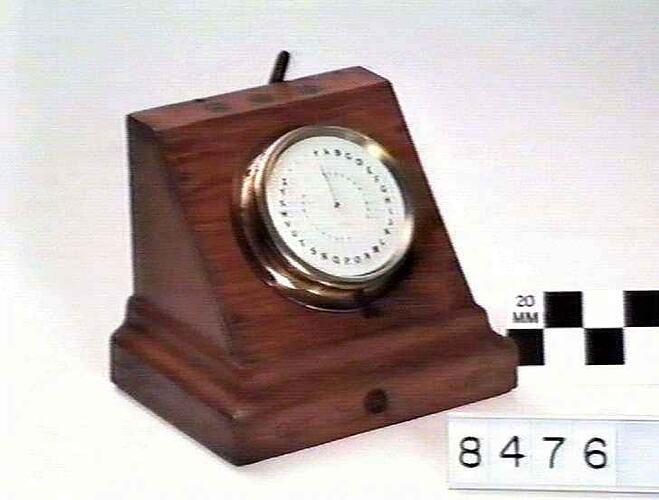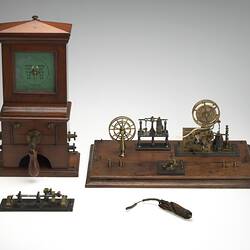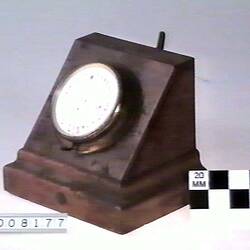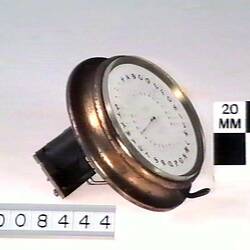Charles Wheatstone (1802-1875) was a pioneer of electric telegraphy. He worked with William Cooke on various forms of the needle telegraph, where the transmitted letters were decoded by an operator noting the deflections of one or more needles on the receiver. Wheatstone developed other ways of coding and decoding messages to simplify the process so that skilled operators were not required. In 1840, Wheatstone and Cooke patented an 'ABC' telegraph in which the rotation of a wheel marked with the letters of the alphabet brought a particular letter to an index mark and transmitted a signal corresponding to that letter. Ultimately, in 1858, Wheatstone patented a developed version of the ABC telegraph which became widely used on private lines or in situations where telegraph traffic was insufficient to justify the employment of a trained operator.
The ABC telegraph system consisted of three main components - the generator, the communicator, and the indicator. The communicator and the indicator were mounted on top of a wooden box. The generator was inside the box and was operated by a handle projecting through one end of the box.
The generator consisted of an armature carrying a coil of fine wire and rotating between the poles of a set of permanent magnets. Rotating the armature by means of the external handle generated a series of positive and negative current pulses which were fed into the telegraph line to the receiving station.
The communicator controlled how the current pulses were transmitted. It had a circular dial with the letters of the alphabet marked around its periphery and a needle pivoted at the centre of the dial. Opposite each letter on the communicator dial was a key. To transmit a letter, the appropriate key on the communicator was depressed and the handle of the generator was turned. When the number of pulses corresponding to the selected letter had been transmitted, the communicator disconnected the generator from the telegraph line. The communicator needle rotated while the generator was transmitting and stopped at the transmitted letter when the generator was disconnected.
At the receiving end, the indicator decoded the pulses from the communicator. The indicator had a circular dial with the letters of the alphabet marked around its periphery and a needle pivoted at the centre of the dial. As the pulses were received the needle moved around the dial and stopped at the appropriate letter.
Provision was made to ensure that the communicator and indicator were properly synchronised, and it was possible to transmit numbers and punctuation marks as well as letters. Apparently speeds of about 15 words per minute were possible.
In Victoria, Wheatstone ABC telegraphs were first used between Government departments in Melbourne and later by smaller post and telegraph offices in areas where telegraph traffic was light. They were also used privately by newspapers and other businesses.
More Information
-
Keywords
-
Authors
-
Article types








